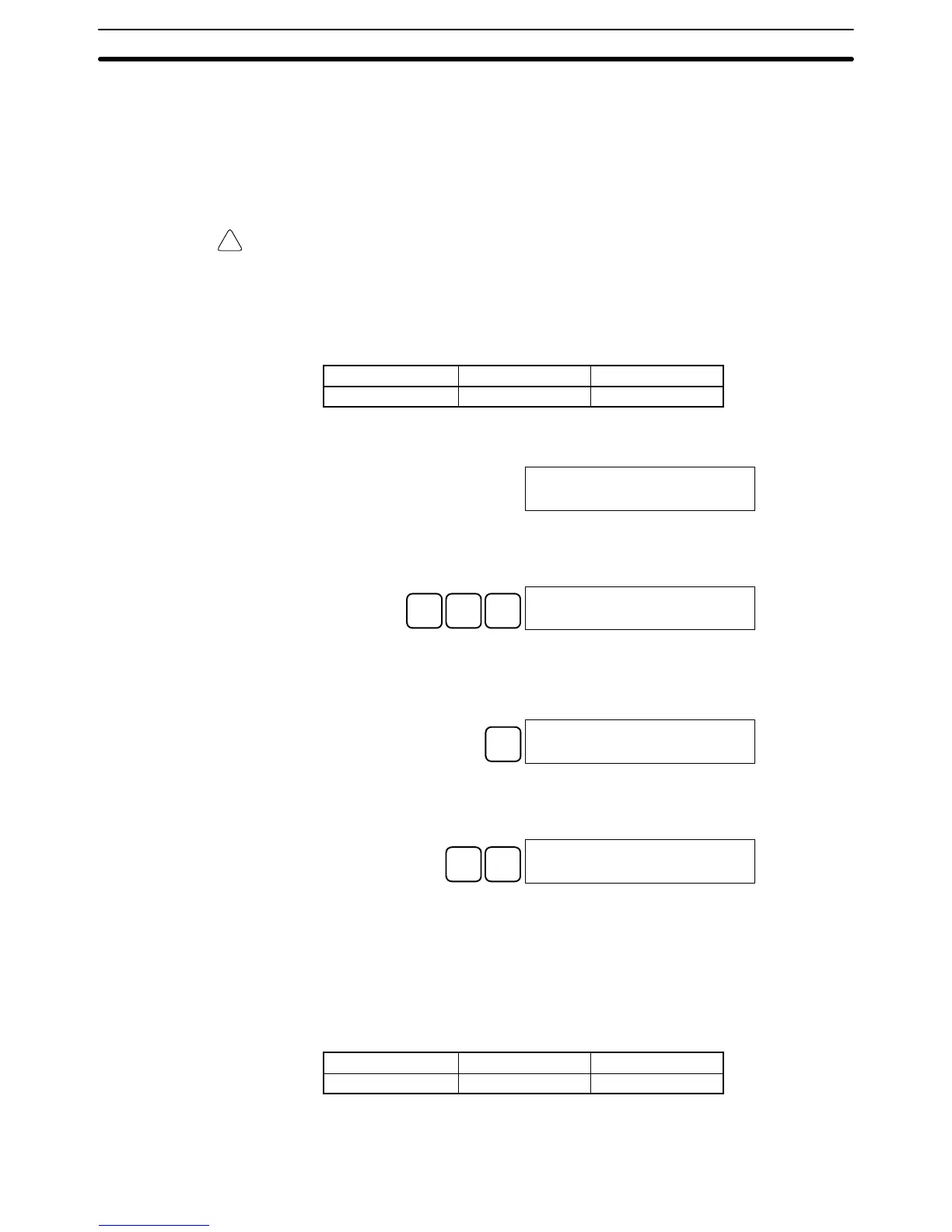!
3-6SectionProgramming Console Operations
101
3-6-18 Decimal Monitor Without Sign
This operation is used to convert hexadecimal data in a word to decimal with-
out sign for display. In addition, two consecutive words of data can be dis-
played in decimal as eight digits of hexadecimal (double-length display). I/O
monitoring, multiple address monitoring and 3-word data modification can be
used during execution.
Caution This function cannot be used with CQM1-CPU11-E and CQM1-CPU21-E CPU
Units.
Note In PROGRAM or MONITOR mode, it is possible to change word data by means
of a decimal-with-sign input. Refer to
3-6-24 Decimal Data Modification (Without
Sign)
.
RUN MONITOR PROGRAM
OK OK OK
1, 2, 3...
1. Monitor the word that is to be used for decimal monitor without sign. During
multiple address monitoring, the word on the left is the object.
Multiple address monitoring
cL01 cL0200001
FFF0 F000^ OFF
2. Decimal monitor without sign is executed. When the SHIFT and TR Keys
are pressed here, the I/O monitor, multiple address monitoring, or 3-word
data modification display is restored.
SHIFT TR
NOT
cL01
65520
• Double-length Display
3. The word that was monitored is taken as the rightmost four digits of eight
digits hexadecimal, and the next word as the leftmost four digits, and they
are converted to a decimal number with sign for display.
EXT
cL02 cL01
4026597360
4. When the decimal monitoring without sign has been completed, the I/O
monitor, multiple address monitoring, or 3-word data modification display is
restored.
SHIFT TR
cL01 cL0200001
FFF0 F000^ OFF
Note The I/O monitor, multiple address monitoring, or 3-word data modification dis-
play can also be restored by means of the CLR Key.
3-6-19 3-Word Data Modification
This operation is used to change the contents of one or more of the 3 con-
secutive words displayed in the 3-Word Monitor operation. It is possible in
MONITOR or PROGRAM mode only.
RUN MONITOR PROGRAM
No OK OK
1, 2, 3...
1. Monitor the status of the desired words according to the procedure
described
3-6-16 3-Word Monitor
.
